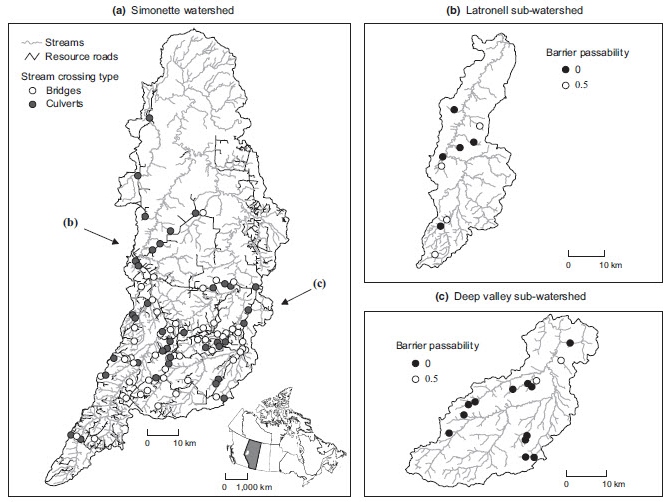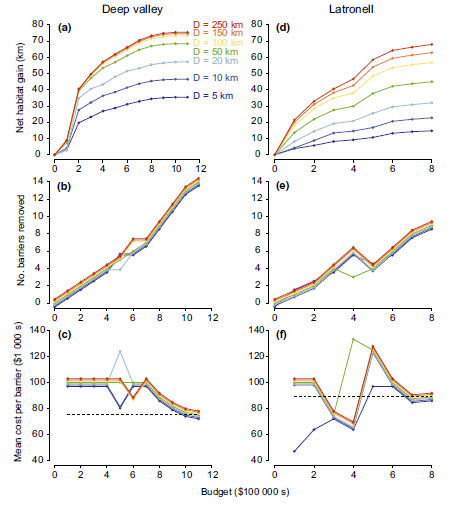Abstract:
Stream crossing structures are an increasingly prevalent anthropogenic feature on North American riverscapes, particularly in watersheds affected by industrial resource development in sensitive boreal environments. If improperly managed, stream crossings have the potential to alter fish habitat and impede fish movement. This study assessed instream habitat characteristics and fish communities from 33 culverted, bridged and reference streams in an industrialising region of the boreal forest in west-central Alberta. Mixed-effects modelling and multivariate analysis were used to determine impacts of stream crossings at three scales: whole-stream scale, within-stream scale and the interaction of scales. Instream habitat characteristics such as mean depth, water velocity, percent fines, turbidity, water temperature and dissolved oxygen showed significant between-stream as well as within-stream differences among stream crossings. The majority of fish species exhibited significantly lower densities (n m−2) in upstream habitats as compared to downstream habitats, including a significant reduction in Slimy Sculpin densities in culverted streams. Multivariate tests corroborated these results, showing that fish assemblages differ as a function of stream type. This study suggests industrial stream crossings influence abiotic habitat characteristics in freshwater ecosystems, restrict biotic connectivity and impact fish community structure at the whole-stream and within-stream scales. Alterations to stream ecosystems associated with stream crossings may be driving large-scale changes in stream fish communities in the boreal forest. With expanded development expected in much of North America’s boreal region, mitigation measures which limit impacts from stream crossings are needed to ensure proper ecosystem function in freshwater systems.
Citation: Maitland, B.M.*, Anderson, A. and Poesch, M.S. (2016) Prioritising culvert removals to restore habitat for at-risk salmonids in the Boreal forest. Fisheries Management and Ecology 23: 489-502.
Site Locations of Assessed Stream Crossings, including (a) Simoneete, (b) Latronell and (c) Deep Valley watersheds in Alberta Canada.

Prioritization given: net habitat gain (a,d), number of barriers removed (c,f) and the mean cost per barrier (c,f) across Deep Valley and Latronell subwatersheds.

Also Read:
*Lab members: Bryan Maitland, Mark Poesch. Check out opportunities in the lab!

